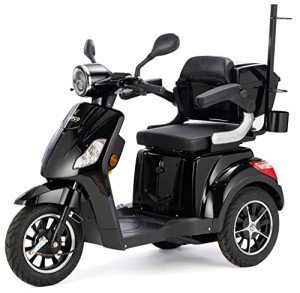The Most Pervasive Problems With Buying Mobility Scooter

A Comprehensive Guide to Buying a Mobility Scooter
Mobility scooters have ended up being an important tool for lots of people wanting to improve their independence and mobility. With a huge variety of models and features available, picking the right mobility scooter can be daunting. This short article offers an informative guide to assist customers browse their choices, assess their needs, and make a notified purchase.
Comprehending Mobility Scooters
Mobility scooters are electric vehicles developed for individuals who experience mobility challenges. They are particularly useful for elders, those with disabilities, or people recuperating from injuries. Mobility scooters can differ commonly in terms of style, functions, and rates.
Kinds Of Mobility Scooters
Before embarking on a purchase, it's vital to comprehend the different types of mobility scooters available:
Three-Wheel Scooters:
- Generally more maneuverable in tight areas
- Lightweight and portable
- Suitable for indoor use
Four-Wheel Scooters:
- Offer greater stability and balance
- Appropriate for outside use over various terrains
- Usually have a longer battery life
Foldable/Portable Scooters:
- Designed to be quickly carried and kept
- Can often fit in the trunk of a vehicle
- Suitable for those who travel often
Sturdy Scooters:
- Built to accommodate larger people
- Frequently included more robust functions for outdoor usage
- Normally equipped with bigger batteries for extended range
Elements to Consider When Buying a Mobility Scooter
1. Weight Capacity
Choose a mobility scooter that can support the user's weight. A lot of scooters have a weight limit varying from 250 to 500 pounds. It is crucial to guarantee that the scooter can accommodate the user easily.
2. Range and Battery Life
The range is how far the mobility scooter can travel on a single charge. Normal ranges differ in between 10 to 30 miles. Consider the user's everyday activities and pick a scooter with an ideal variety.
3. Scooter Dimensions
Think about the size of the scooter, including its weight and dimensions. mobility electric scooter might be perfect for narrow corridors and tight spaces, while larger models provide extra stability and convenience.
4. Surface Capability
Examine where the scooter will mostly be used. If the user plans to take a trip mainly on pavement, a lightweight model might be sufficient. However, if the user requires to pass through gravel or uneven surfaces, consider a four-wheel scooter built for off-road use.
Top Features to Look For
Comfort
- Adjustable Seats: Look for scooters with cushioned and height-adjustable seats to ensure comfort during travel.
- Armrests: These boost safety and support while browsing.
Safety and Visibility
- Headlights and Taillights: Essential for nighttime usage.
- Turn Signals and Reflectors: Improve presence and safety while on the roadway.
User-Friendly Controls
- Joystick or Drive Controls: These must be instinctive and simple to manipulate.
- Easy-to-Read Displays: A control board that shows battery life, speed, and range can boost the user experience.
Extra Features
- Storage Compartments: These provide included benefit for bring personal items while on the go.
- Weather Protection: Consider models with rain covers or windshields if used in variable weather.
Cost Considerations
When budgeting for a mobility scooter, costs can range anywhere from ₤ 500 to over ₤ 5,000 depending on the design, functions, and brand name. Additional costs might consist of:
- Extended Warranty: Protects against problems and can save cash in the long run.
- Accessories: Optional functions, such as updated seats, lights, or storage services.
| Function | Expense Range |
|---|---|
| Basic Models | ₤ 500 - ₤ 1,500 |
| Mid-Range Models | ₤ 1,500 - ₤ 3,000 |
| High-End Models | ₤ 3,000 - ₤ 5,000 |
Financing Options
Numerous retailers offer funding plans, and some city government efforts might provide grants or support for those in requirement. Investigate prospective monetary assistance with neighborhood resources or mobility service companies.
FAQs about Buying a Mobility Scooter
What is the difference in between a mobility scooter and a wheelchair?
Mobility scooters are motorized and enable users to navigate individually, while wheelchairs may need physical assistance or manual operation.
How do I preserve a mobility scooter?
Routine upkeep includes inspecting battery life, cleaning the scooter, and checking tires and brakes. Constantly refer to the user manual for specific guidelines.
Can mobility scooters be utilized inside?
Yes, many models are created for both indoor and outdoor use. However, three-wheel scooters tend to be much better matched for indoor navigation due to their tighter turning radius.
Are mobility scooters covered by insurance?
Some insurance plans cover a part of the costs for mobility scooters if they are deemed clinically needed. Contact your provider for particular details.
How quickly can a mobility scooter go?
Many mobility scooters have an optimal speed varying from 4 to 8 mph. However, the proper pace may vary depending on regional policies.
Buying a mobility scooter can considerably boost one's independence and lifestyle. By understanding the types, features, and costs related to mobility scooters, prospective buyers can make knowledgeable decisions that fit their requirements and preferences. Customization and thorough research are key to making sure fulfillment with this important financial investment.

